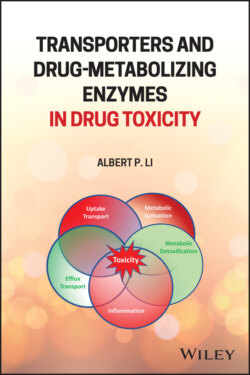Читать книгу Transporters and Drug-Metabolizing Enzymes in Drug Toxicity - Albert P. Li - Страница 82
3.10 Tacrine
ОглавлениеTacrine hydrochloride (1,2,3,4‐tetrahydro‐9‐acridinamine monohydrochloride), an acetylcholinesterase inhibitor [169], was one of the first drugs marketed to combat Alzheimer’s disease based on the cholinergic theory of the disease mechanism. Tacrine was approved for use by US FDA in 1993 to treat Alzheimer’s disease patients with mild to moderate symptoms of dementia. Tacrine was withdrawn from the U.S. market in May 2012 due to liver toxicity and the availability of alternative acetylcholinesterase inhibitor drugs with lower frequency of liver enzyme elevation.
Hepatotoxicity is a major complication of tacrine. It has been estimated that nearly half of the patients that received tacrine had reversible elevation of the clinical marker of liver toxicity, plasma alanine aminotransferase activity. This hallmark of liver toxicity appeared to be reversible in some patients as it was resolved by discontinuation of administration, and in some cases, without discontinuation. However, a small number of patients eventually developed severe and fatal liver toxicity in spite of frequent monitoring of serum liver enzyme activities [170–172].
